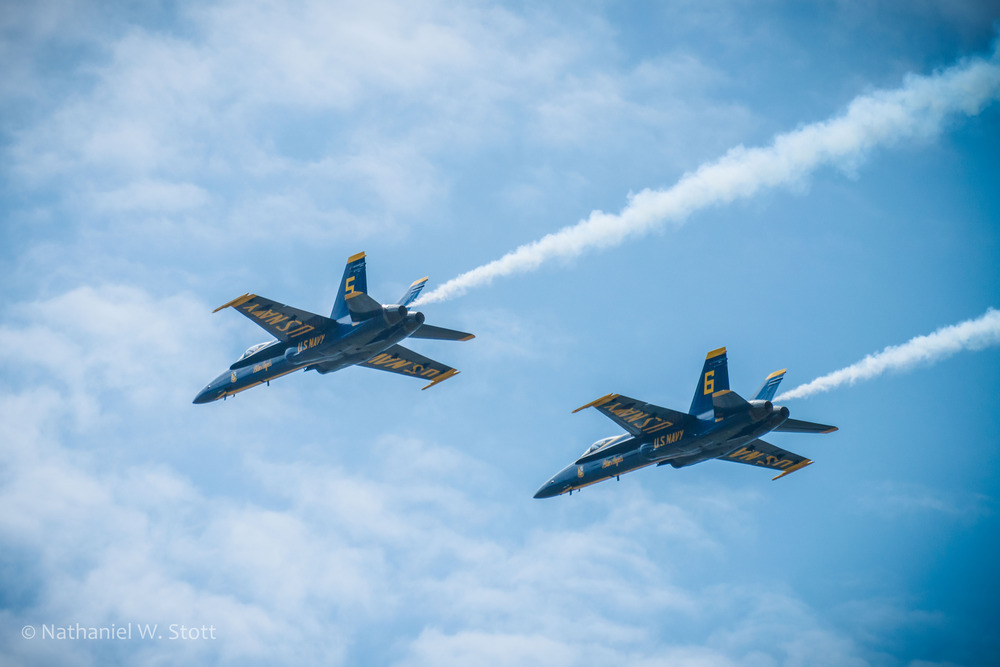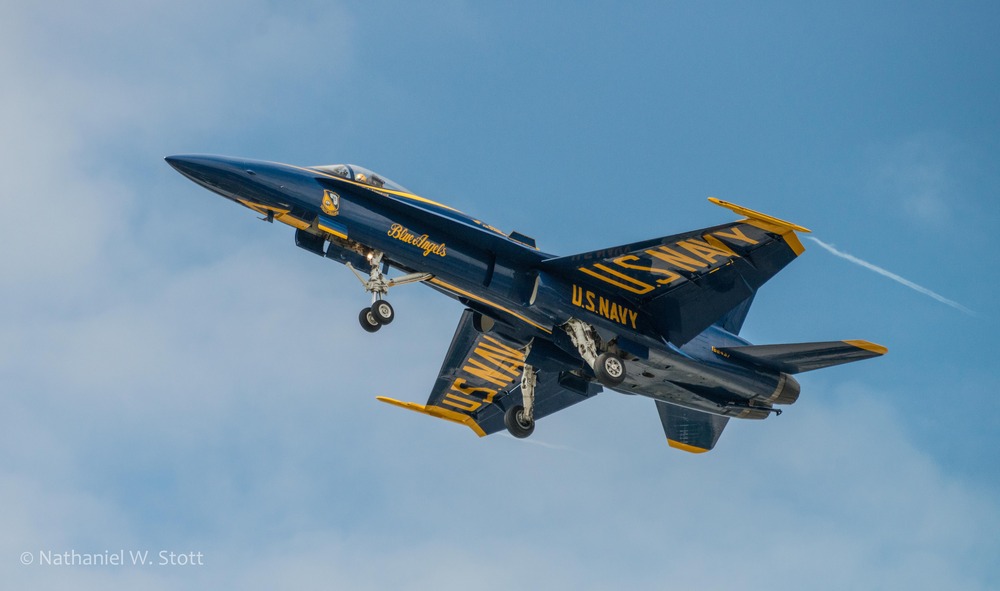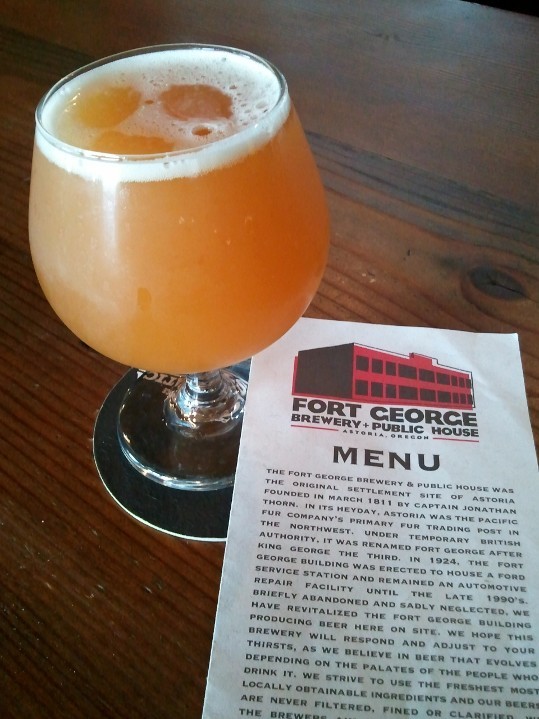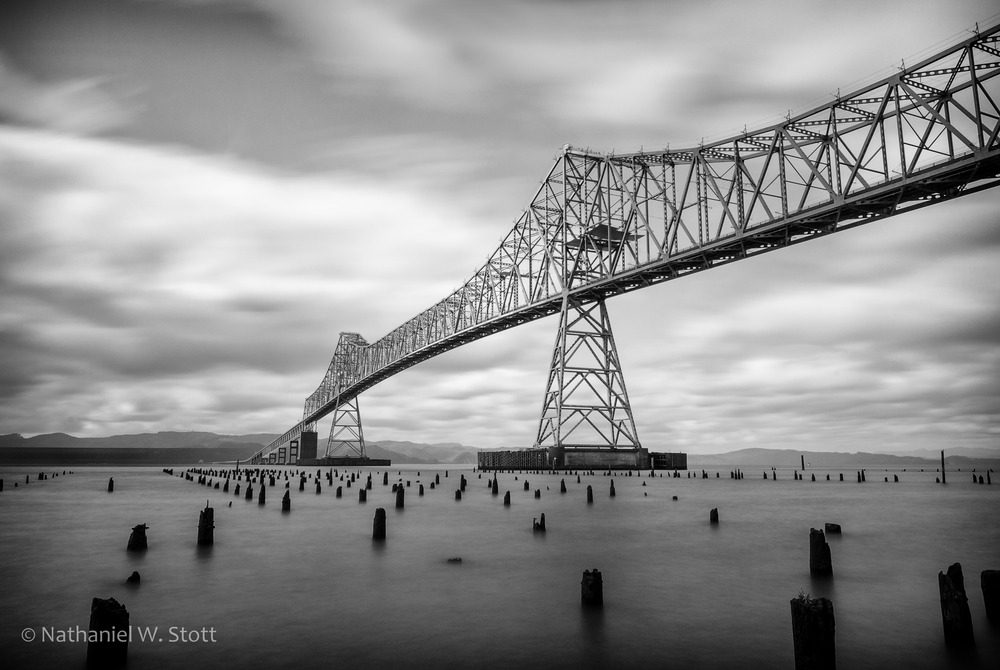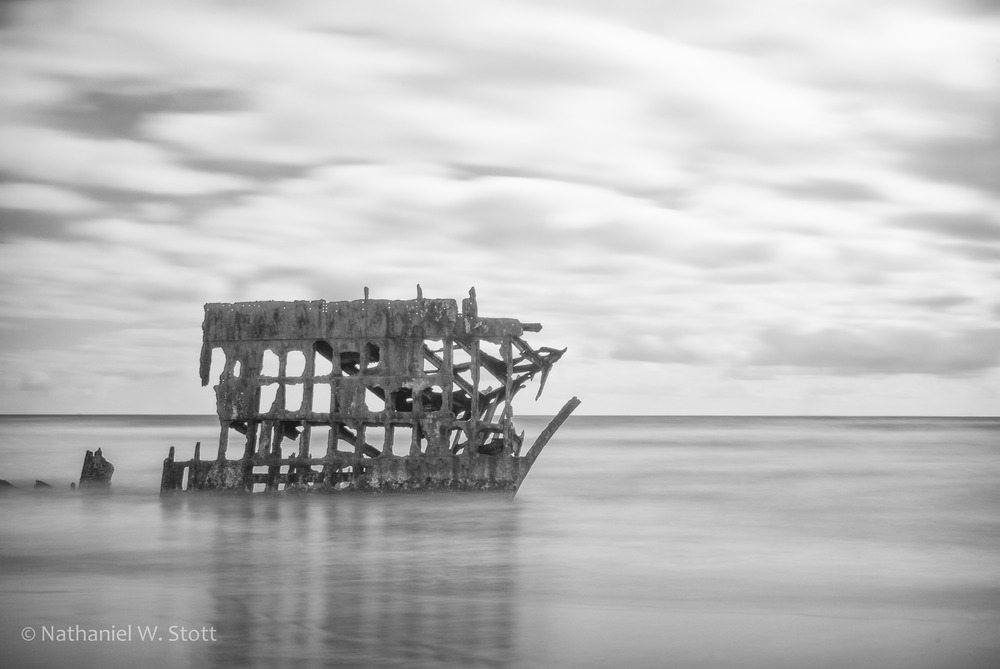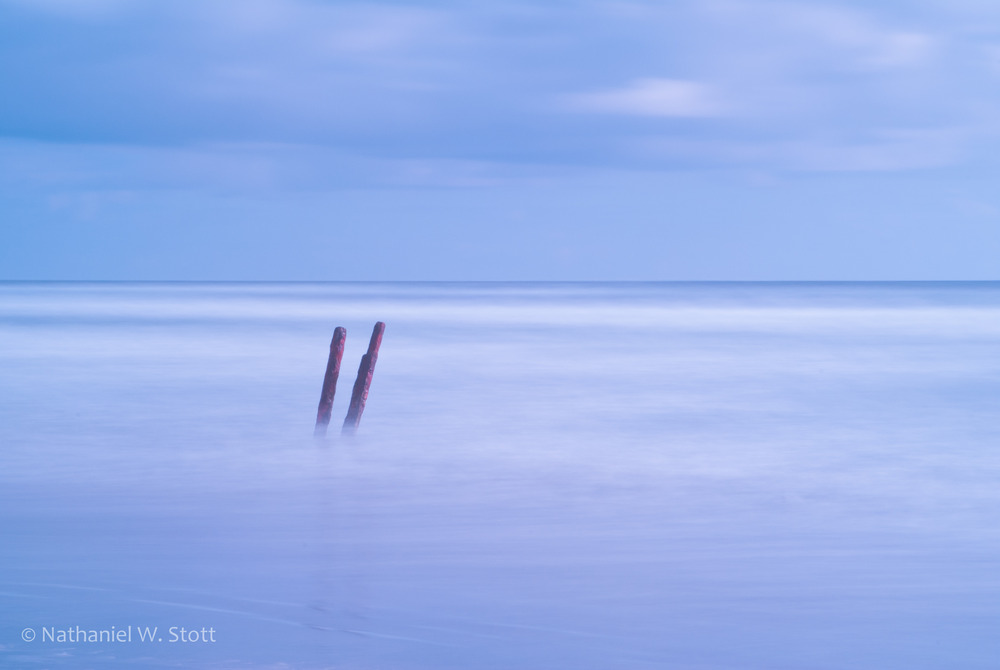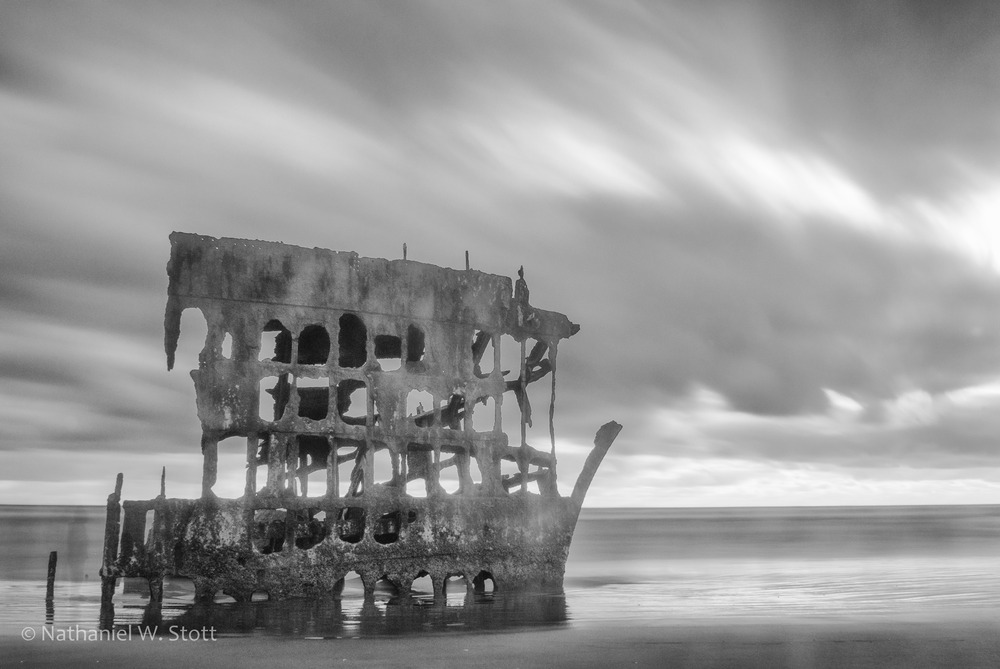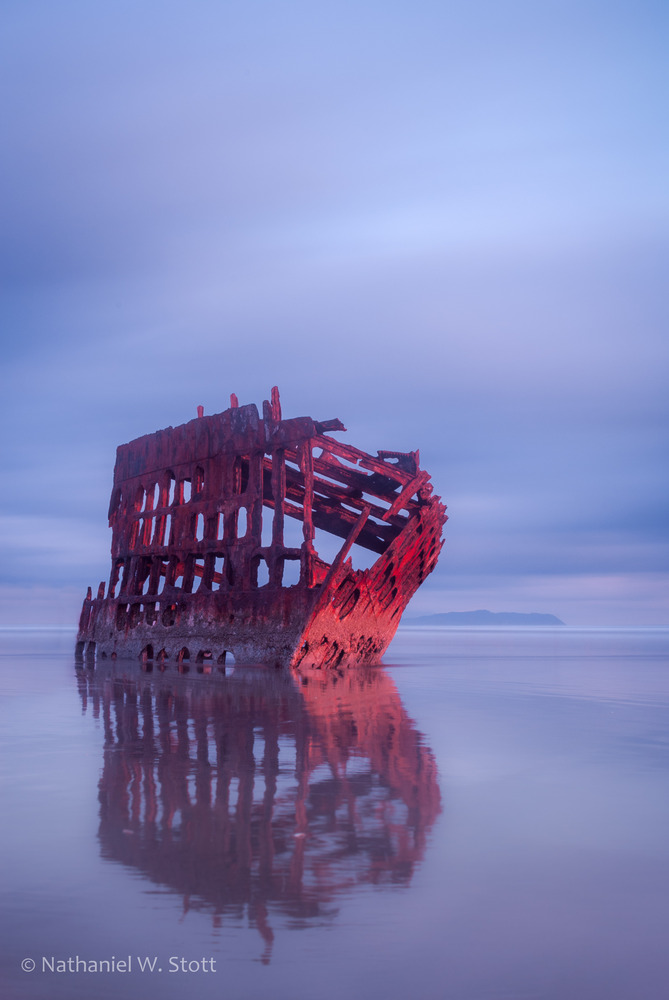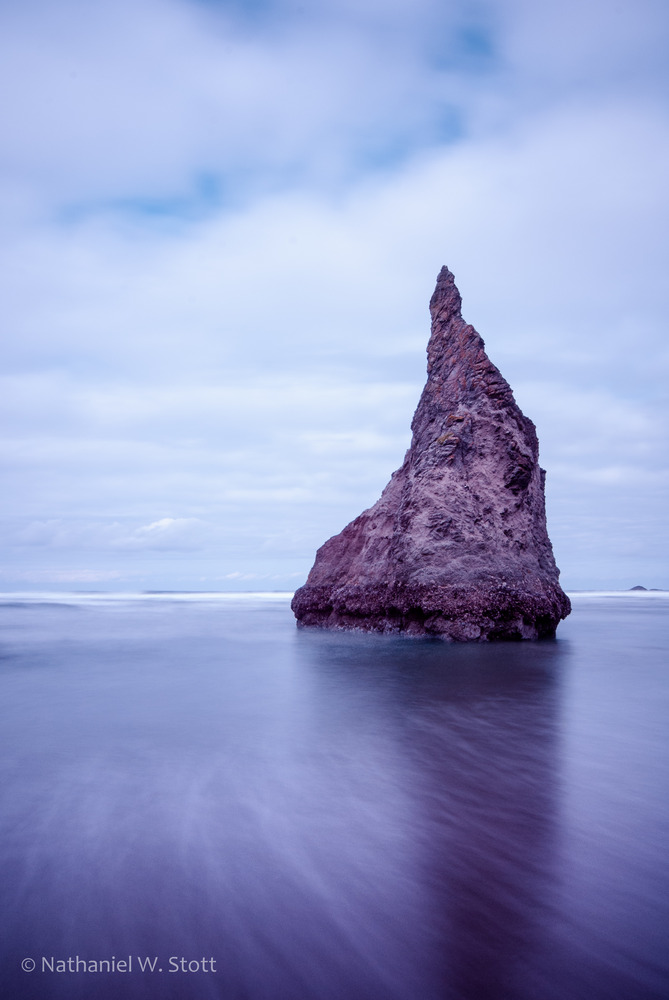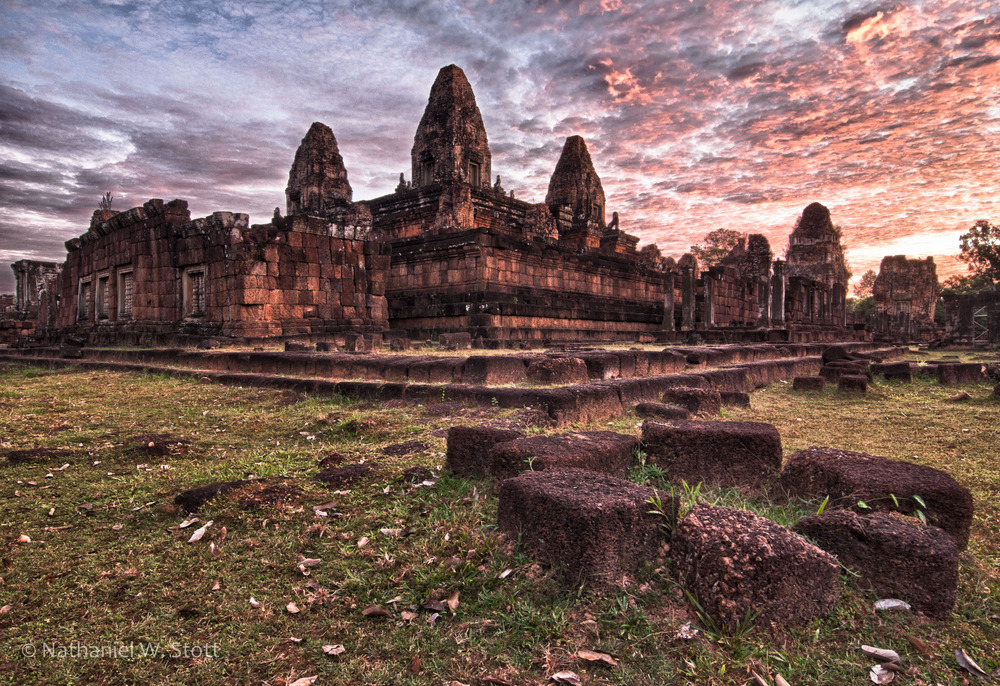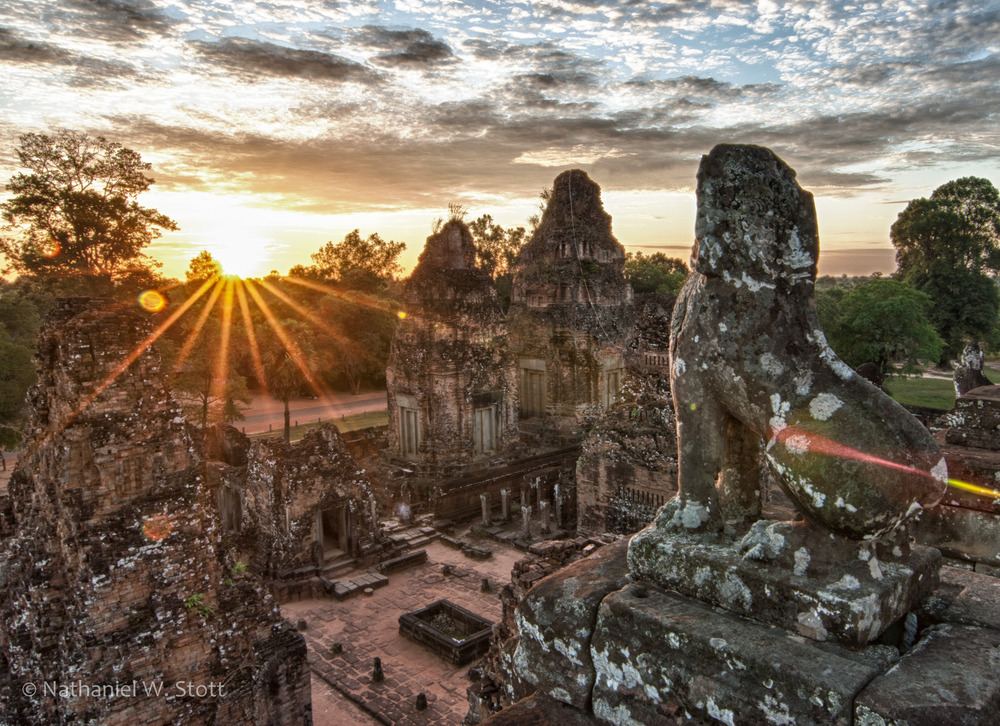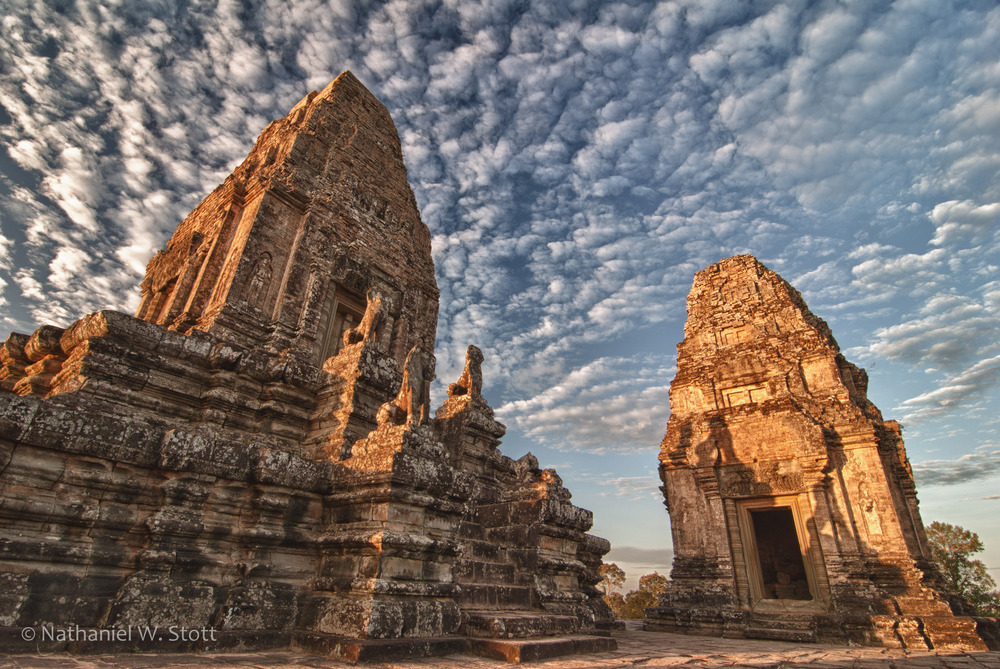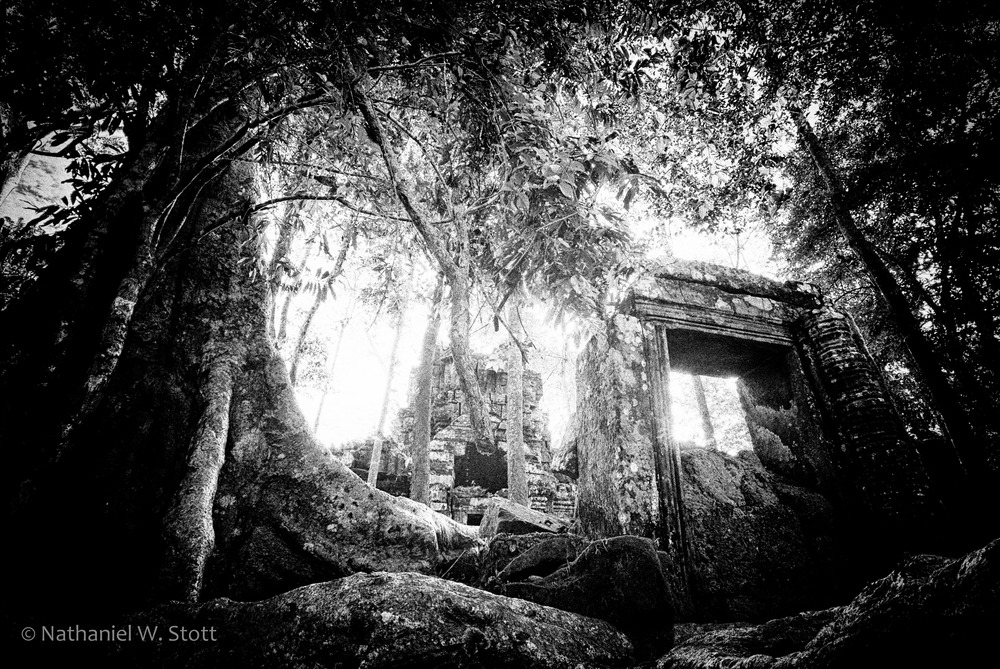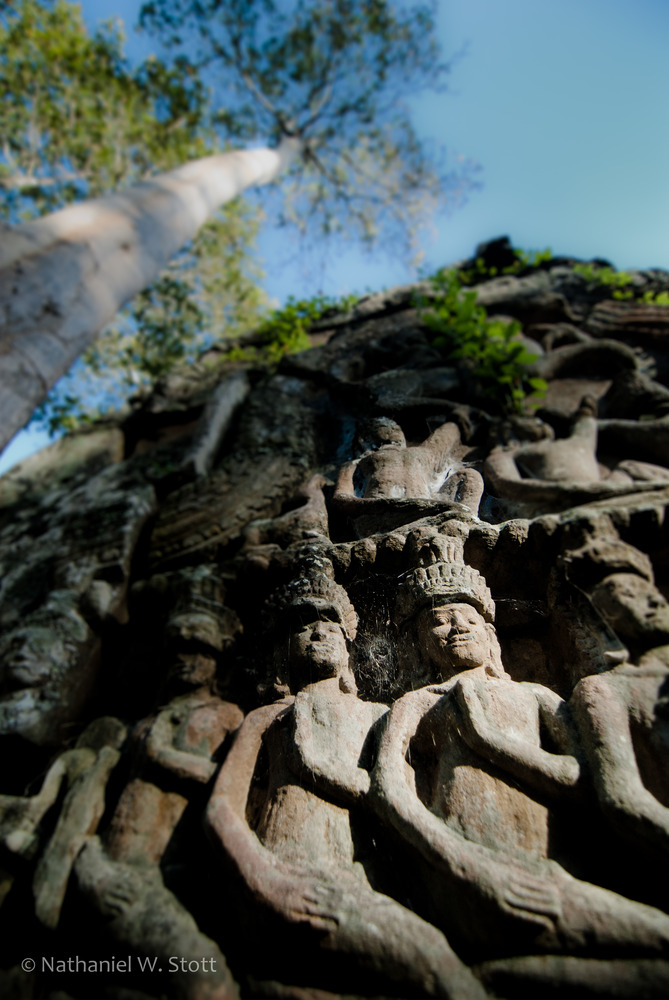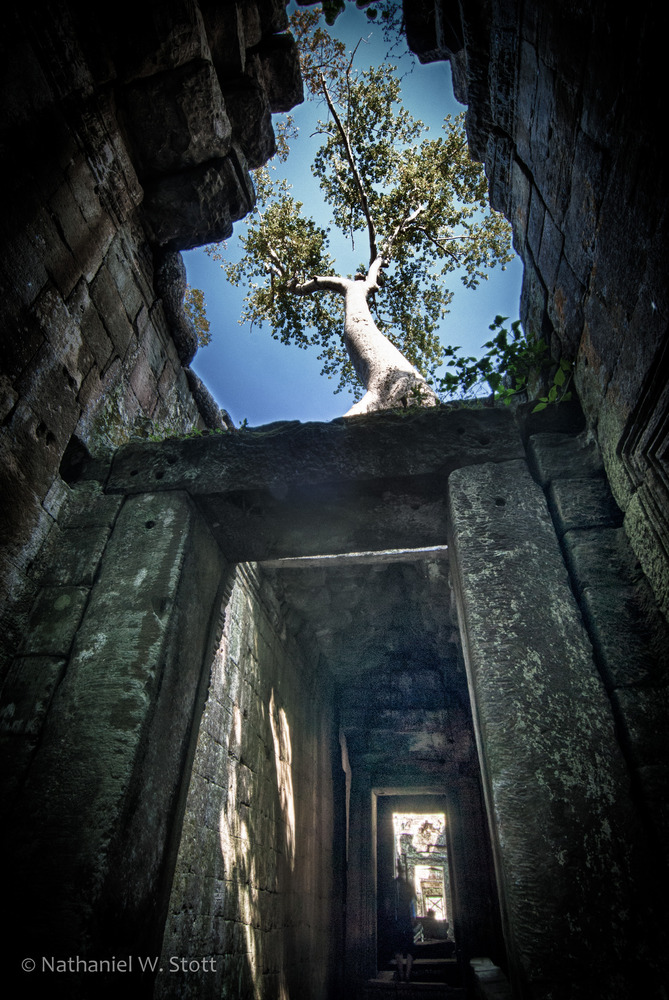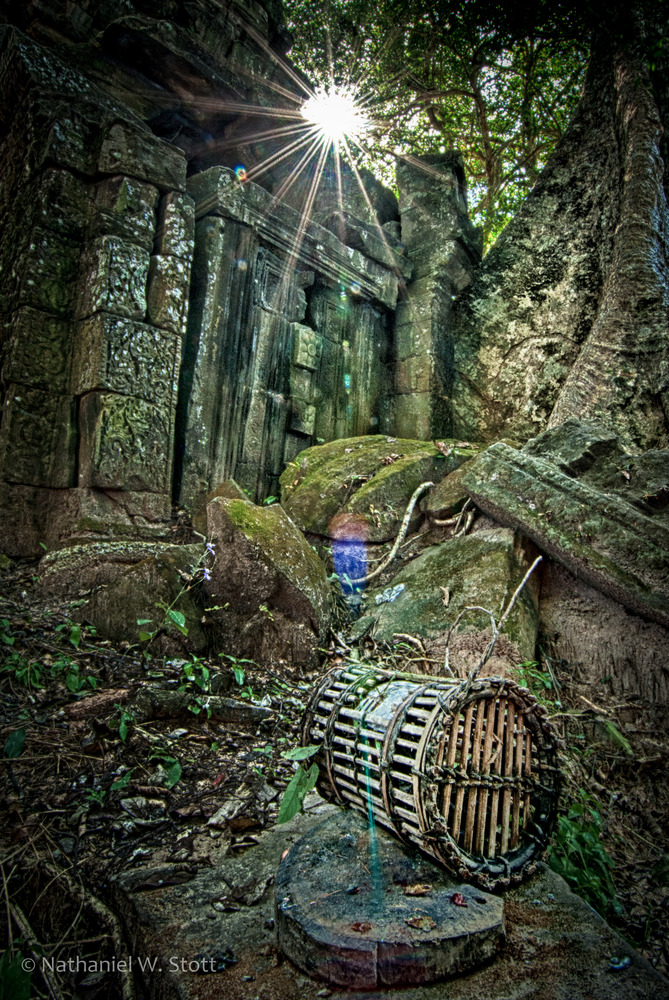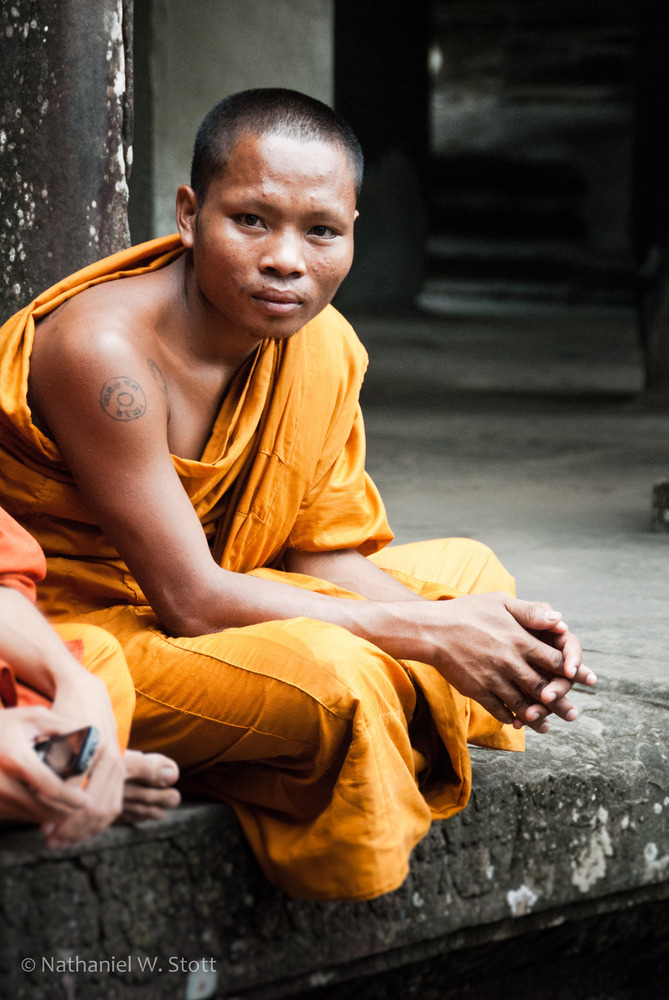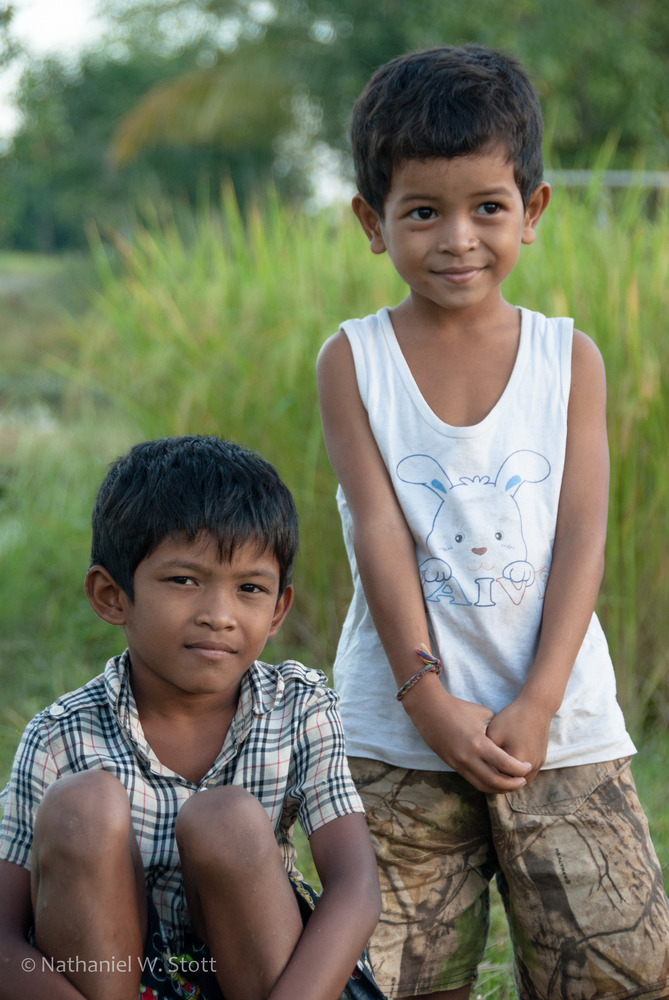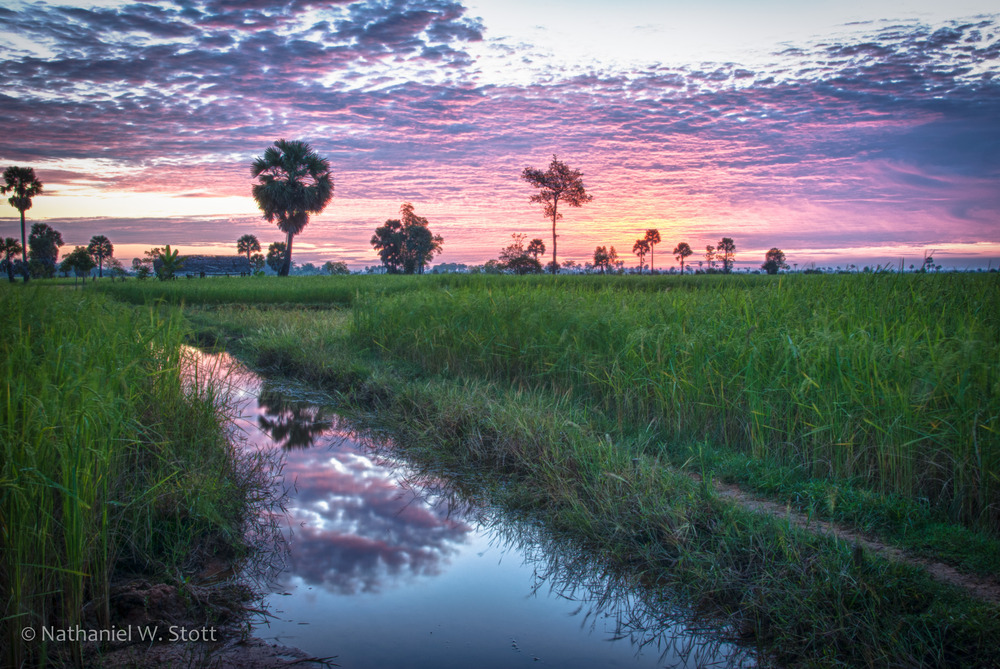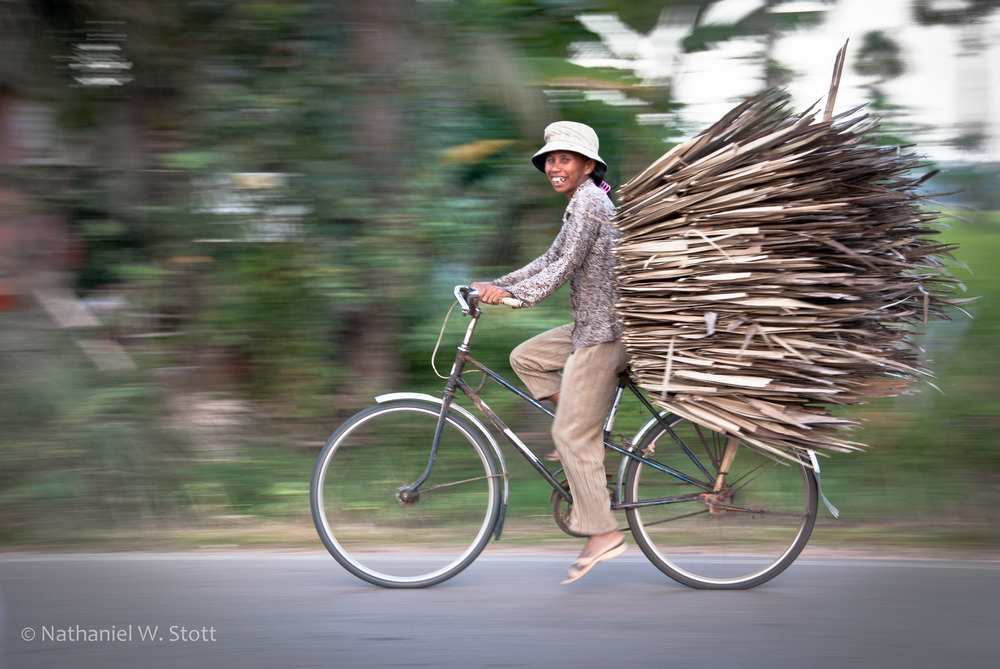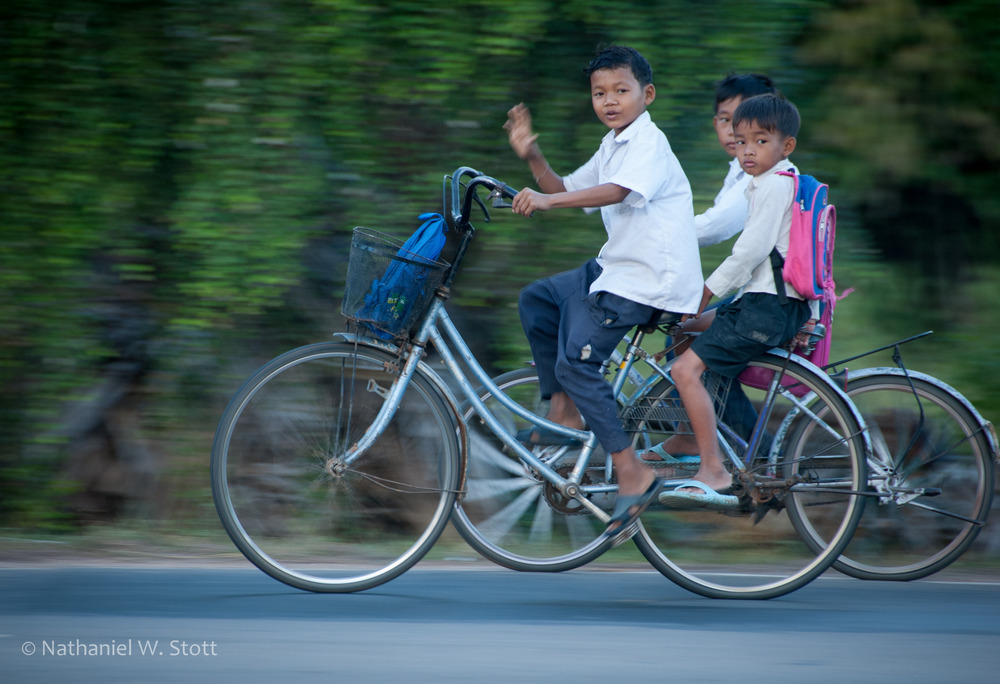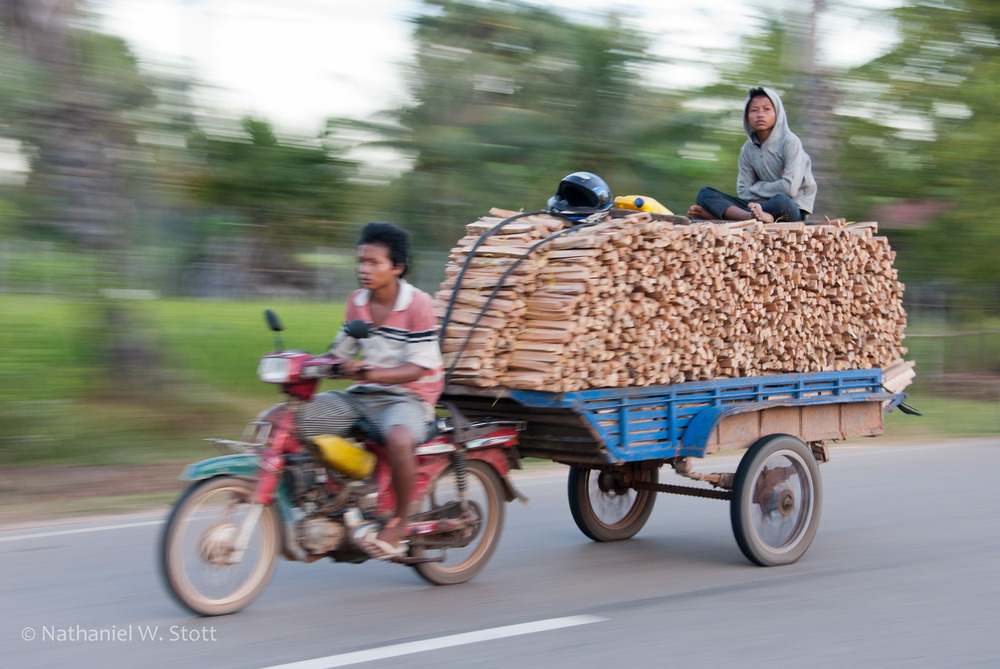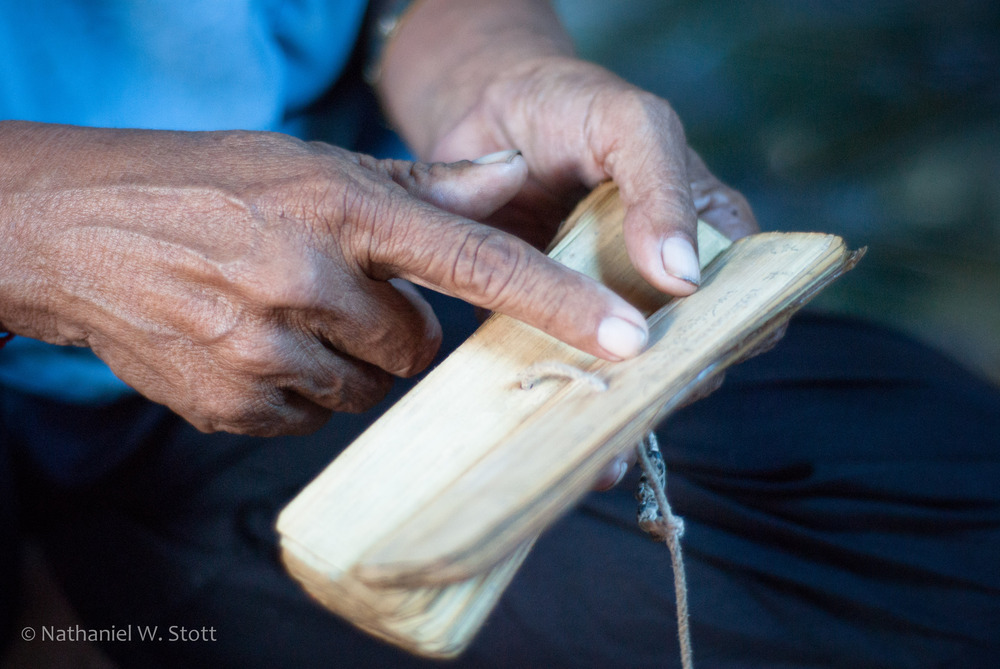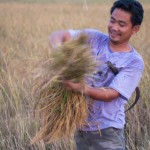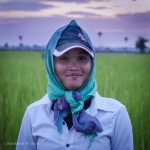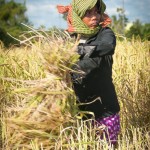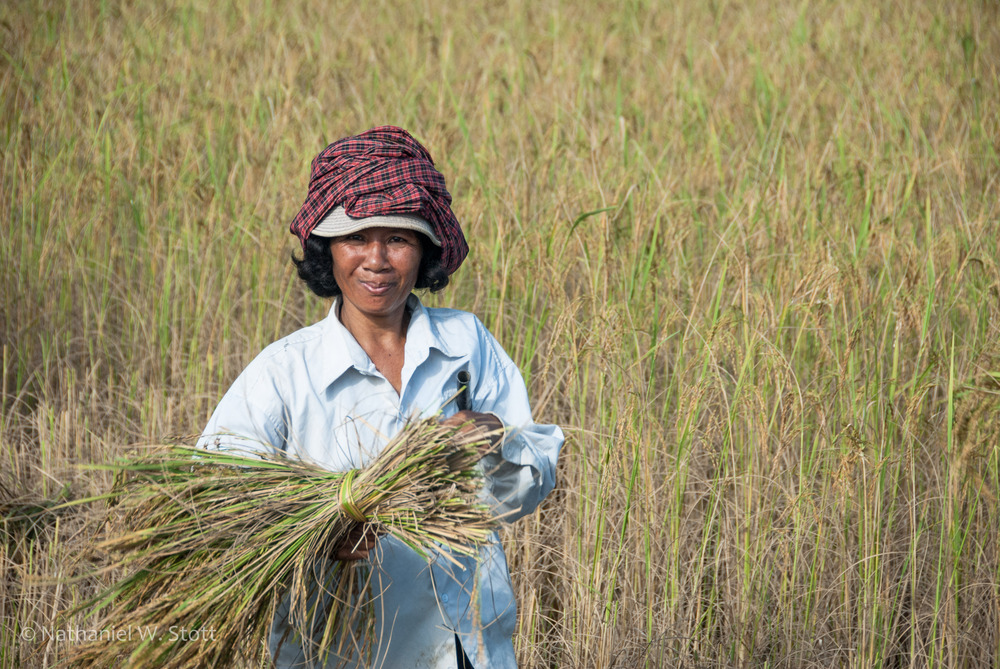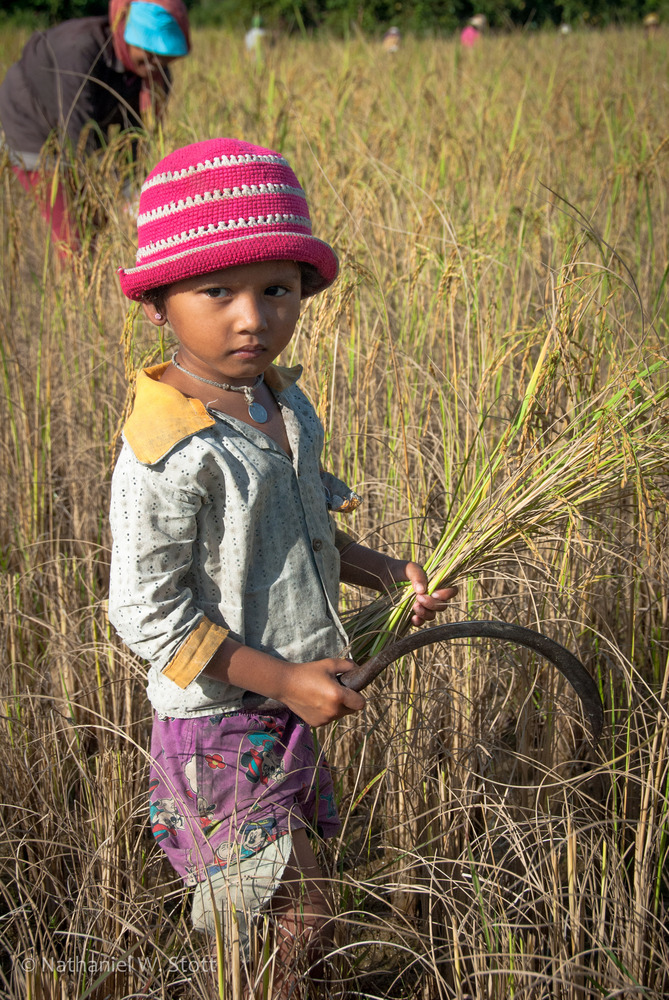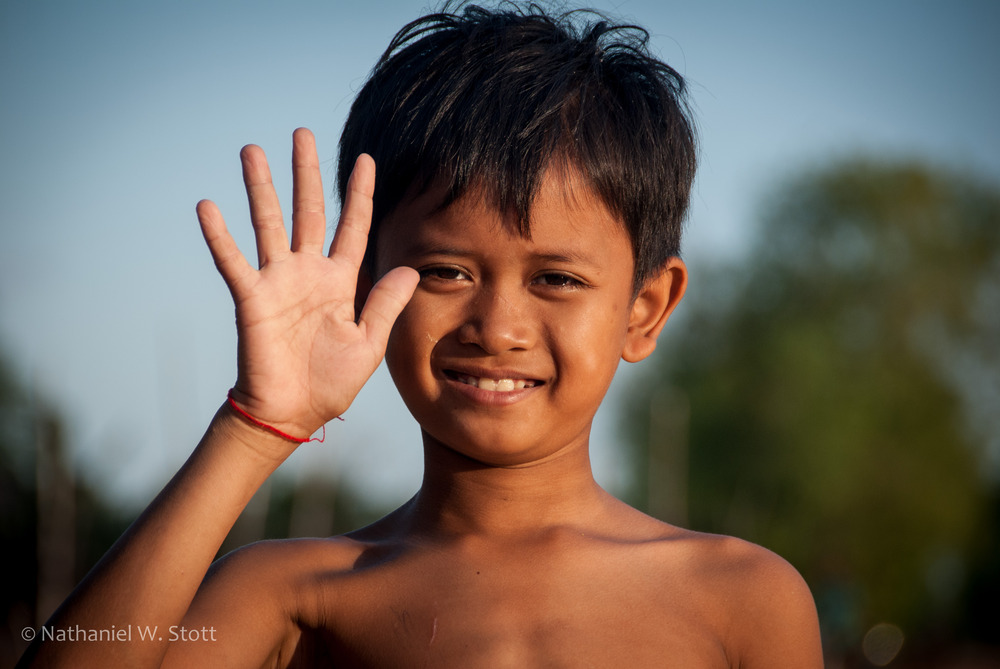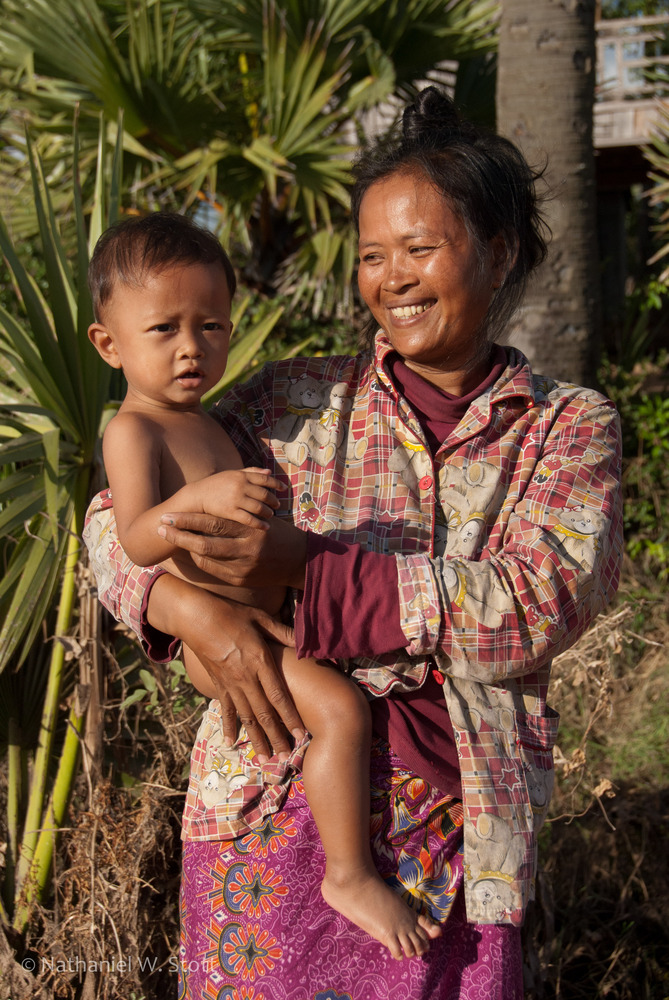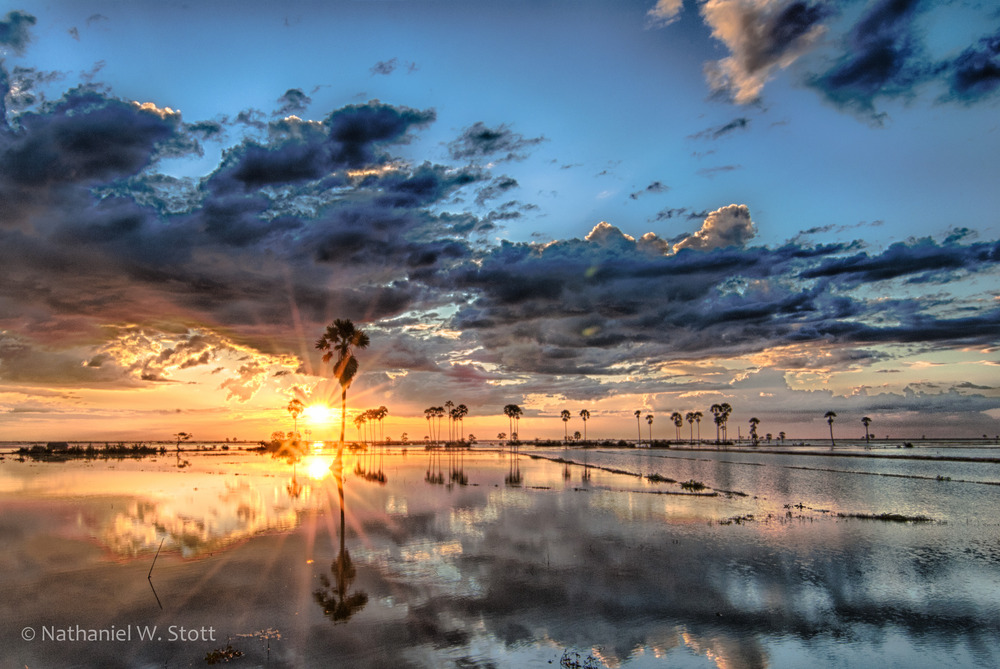05
2012My boss (check out his photos here) and I did a quick run to grab some pictures of the Blue Angels taking off and landing for their practice in advance of Seafair. They’re stationed at Boeing field while they’re in town, which has relatively decent access to the north end of the runway as well as a wide vantage at the south end.
We positioned ourselves at the north end, given the prevailing wind conditions, which allowed us to be right under the flight path for landing. Given the speed of the F/A-18, their first pass over the runway was a bit of a shock. There was really only a couple seconds of “warning” the planes were approaching. Fortunately, I’d made sure to check the settings on my camera to ensure I was in the appropriate continuous shooting mode and that the auto-focus system was set to track objects through the frame. For the purposes of this event, it worked perfectly! They made an initial high speed pass then came in one at a time for landing.
We grabbed a quick lunch and set up for take-off. Whereas landing was just for 5 and 6 (the solo planes), take-off comprised the primary diamond formation (planes 1 through 4) in addition to another two aircraft (I’m assuming 5 and 6, but not sure). We had lots of advance setup time and positioned ourselves again at the north end of the runway in the direction of take-off.
All up, the entire event was a lot of fun but with only several seconds of worthwhile photographic opportunity it was also quite difficult.
09
2012Anne and I took the weekend to get out of the city and do a little camping up in Mt. Baker. The weather forecast was awesome, if not a little hot, and was a great break from the “Junuary” that Seattle has been having. We (Anne) managed to secure a last minute reservation in the Silver Fir campground and with just a little prep, we were off for a nice weekend of hiking and camping.
Our itinerary had us climbing up Church Mountain on Saturday (the bigger day) and then doing Hannegan Pass/Peak on Sunday. Since the Hannegan day was less elevation gain, we figured that would get us back to Seattle at a decent hour.
The trip up Church was relatively uneventful. The path was snow free until the upper basin where there was snow up to the lookout. We dutifully put on our gaiters and pulled out the ice axes and started the traverse across the basin. Since the ridge prevented the prevailing winds from reaching our side of the basin, the hike up to the ridge seemed more like a hike in a blast furnace than the pleasant walk on snow it should have been. However, it wasn’t long before we gained the ridge and made our way to the old lookout site.
Below us in the meadow (south slope) there was a family of five mountain goats grazing on grass. Across the ridge, about a quarter mile away, we could see a mother black bear and her cub grazing in another meadow.
(bears in the meadow)
We ate lunch at the lookout, and I took a quick panorama before we headed down towards the car and a warm dinner that beaconed in Glacier.
The trip up to Hannegan Peak on Sunday involved less wildlife but had other surprises. The trail to Hannegan Pass leads up a long valley that is subject to myriad avalanche slopes in winter. While the trails weren’t in imminent avalanche threat, the aftermath from the winter had left some debris on the trail in several locations. As well, some of the many streams that crossed the path had treacherous crossings. I took a minor tumble down one destroyed creek crossing. Other places the streams were flowing fast and deep, causing us to ponder the best way to cross without getting our feet soaked in the process.
Despite these small challenges, the scenery was wonderful and the early morning shade kept the trip cool and enjoyable. We hit snow just before Hannegan Camp, where we started the march directly uphill to gain the pass and the ridge up to Hannegan Peak. The slope was steep, and I was pretty thankful to have an ice axe for protection.
We finally gained the ridge, took a quick break to cool down (by now the sun was out and the full heat of the day was making itself known), and heading the remaining several hundred feet to the summit, lunch, and the obligatory summit panorama.
The trip down required a little care since we didn’t want to go down the steep snow slope we ascended. Fortunately, we found a more reasonable route through the trees on climber’s right that had the benefit of shading us from the now pounding heat. The rest of the trip back to the car was uneventful, if somewhat hot and dusty. Overall, a great day in the mountains with wonderful panoramic views of Mt. Baker, the Picket range, and the rest of the North Cascades!
15
2012Anne and I grabbed a Living Social deal to stay a weekend at The Adrift Hotel back in December and had a great time so when we saw another deal pop up we were pretty quick to hop on it. The hotel sits virtually on the beach and the area has some good hiking trails, an awesome ocean front boardwalk, and a paved trail that allows you to bike for miles. There’s also some great nearby photography so it’s an all-around win and a great way to unwind after a stressful week. Due to a last minute change of plans, Anne was able to take the week and head to Yellowstone, which left me solo to enjoy the southern Washington coast.
Saturday morning I started myself out with a 12 mile round trip bike trip to Ilwaco to check out the Saturday Market and the harbor. This entire stretch is serviced by the “Discovery Trail,” a paved trail that runs along the ocean front and then climbs steeply over the coastal ridge and back down into Ilwaco. I’d brought my mountain bike, and at times found the trail so steep that I was having trouble both keeping the rear wheel from spinning and the front wheel on the ground. Regardless, the ride was a good refresher for the morning and left me energized for the afternoon.
Having wet my appetite for long exposure photography in Bandon, I focused on more long exposure photography during the day. My plan was to head towards the Peter Iredale wreck in Fort Stevens State Park. That would take me through Astoria (beer, bridges, etc) and then over to the coast for afternoon and evening sunset.
I made my way slowly towards Astoria, generally exploring all the little side roads and ports and stumbled upon the McGowan church right on the side of the highway just a little west of the Astoria Bridge on 101. The church looked to have been restored and there was fresh work done on the fence in front. With the clouds in the sky and the driftwood in front, it made for an irresistible subject.
I carried on to Astoria where I satisfied two different hungers. The first was a stop by the Oregon Liquor Store where I was finally able to find a bottle of Rogue Pink Spruce Gin. Since they closed the state liquor stores in Washington and privatized everything, it’s been impossible to find anything. The next hunger was satisfied by the Fish and Chips at the Fort George brewery where I also helped myself to a seasonal mango beer (which was impressively tasty for sounding so nasty).
Satiated, I headed for the waterfront to find a vantage point for the Astoria Bridge that would provide a good perspective as well as an interesting foreground. I parked at the Cannery Pier Hotel and walked along the waterfront to the Maritime Memorial.
From there, I headed to Fort Stevens State Park and the Peter Iredale. The Iredale is the wreck of a beached sailing vessel that ran aground in 1906. I was interested in trying to capture the wreck in water, so I wanted to make sure I got there before the tide was too far out. The wreck itself is easily accessible, no more than 100 yards from the parking lot so I was able to take my time and wait for the weather and tides to find the “sweet spot.”
The wreck itself is quite the attraction and I was joined not only by other photographers but also probably 20 or so kids who weaved in and out of the wreck as I was taking pictures. Generally, the light wasn’t favorable to photography since it was coming from the ocean side and the wave action was such that I couldn’t get out far enough to catch the sunny side.
However, just before sunset the clouds parted and the tide was by then far enough out to allow for a single image (a three minute exposure) that perfectly captured the mood and the mystery of the wreck.
The next day I woke up feeling crummy, having spent the better part of 3 hours outside in the cold the evening before. Rather than try and force something that wasn’t meant to be, I instead packed up and headed back to Seattle. But I’ll be looking out for more deals to stay at the Adrift Hotel so I can get back to Long Beach, Astoria, and the Peter Iredale.
29
2012Anne and I decided to take advantage of the long Memorial Day weekend to travel to Bandon for some Oregon coastal photography. In general, the Oregon coast is spectacular for its coastal sea stacks and its vivid topography. Bandon especially has a bunch of interesting features that make it spectacular for photography. We knew in advance that we wanted to focus on long exposures so we invested in some 10-stop neutral density filters that would allow us to slow our shutter speeds down during the day. As well, we wanted to experiment with light painting and especially with light orbs.
While Oregon is just the next state south, Bandon is closer to California than it is to Washington so it took roughly 8 hours to make the journey. We stayed at a nice little hotel just directly across from Old Town on 101 called The Inn at Old Town. The place was nice and quiet and provided great value (though the bed could have used some work), especially since we could just walk across the road to grab food and take pictures of the harbor area.
We came into town hungry from the drive and so we jumped across the street to eat at the recommended Alloro Wine Bar & Restaurant. The food and service were excellent. I had a Pistachio Crusted Halibut for my main course and it was probably one of the finest fish dishes I’ve ever had. The place was so good that we wound up coming back during our trip, which is something we rarely do on short trips because we try to get maximum variety.
We spent Saturday morning working the Bandon beach sea stacks with long exposures. The tide was heading out, which provided good opportunities to wander in and amongst the rocks and get some of the finer detail. It also allowed us to form a proving ground to help us see what worked and what didn’t with the longer exposures. We both had rubber boots, which allowed us to set up in the surf.
This is a tricky business, because every ten minutes or so a larger wave would come in that would require a retreat to higher land (Pro Tip: I missed one of these and wound up with a boot full of water. Always keep your eyes on the water.). Also, these larger waves tend to cause your tripod to sink into the sand at each turn, and with long exposures that can lead to blurred subjects. The trick is to get your tripod fully embedded by pushing it down until it hits firmer sand deeper down as a wave passes and liquefies the top layer.
In the afternoon, we spent time at the Coquille River Lighthouse. While the light isn’t as large as some, it has an interesting octagonal keeper’s house and rich colors, which make it impressive in its own right. As well, it’s possible to get out on the rocks and shoot back at the light, so you can grab some longer shots that incorporate the waves coming up the mouth of the river.
(photo by Anne Archambault)
We also spent time working on shooting various pilings in the water. I’ve always had great interest in the somewhat ghostly appearance of long exposure images of lone pilings, so we took advantage of the waning light to really work some of these subjects before dinner.
Finally, we closed out the evening with some night shots of orbs on the beach. We’d practiced making orbs at home before the trip and had rigged up a strand of portable LED Christmas lights we’d purchased for a Christmas camping trip to Death Valley several years ago. The basic idea is to bundle most of the lights in a wad near the end of the strand so you have a concentrated mass of light. You can also add color to the bundle by adding cinematic gel (or some other translucent colored substance). You also need to black out any remaining lights on the strand by covering them with black duct tape (or gaffing tape if you have it). With this setup and a little practice, you can start creating light orbs pretty much anywhere you can get long exposure times.
(photo by Anne Archambault)
Sunday we spent the day further afield. Our intent was to do one of the various hikes around the area and also try and capture some tidal pools for macro work. We drove south to the Cape Blanco lighthouse and spent time there working the various angles around the light and also spent time doing some close-up work on the iris that grow in this particular area.
We decided on the Blacklock Point hike (about halfway back to Bandon from Cape Blanco) and we made the short hike out to the point just after noon. The path was a little soggy, but most places with standing water also had boardwalks or side paths that avoided getting wet. We’d packed a picnic lunch and so we were able to enjoy a wonderfully private lunch overlooking the Pacific Ocean. Afterwards, we scrambled out to the bluff and spent time making images and taking panoramic pictures.
The final stop of the day was the McCullough Bridge up in Coos bay. I’ve been fascinated with the bridges of highway 101 since I saw a TV special on them some years ago. In Oregon especially they have wonderfully elegant spans. We took up position on the Trans-Pacific Parkway that led to Horsefall Beach as the light started to fad and the rain started to come down. It turned out to be a pretty bad vantage point, too far away to provide perspective I was after.
On Monday, we needed to head slowly back to Seattle. In order to try and dodge a little traffic, we decided to spend the morning in Bandon and then come back in the evening so we were able to spend Monday morning on the beach, again working the sea stacks against low tide. This allowed me to learn from a bunch of the mistakes I’d made on Saturday morning and better tune my compositions. We also had hints of blue sky, which also helped to set the images apart from the previous day.
Since we had to return via Coos Bay, I was also able to give the McCullough Bridge another attempt. This time I found a small access road just under the bridge on the north approach (off East Bay Drive) which provided the composition I was looking for. Low tide was mandatory to gain access to the beach just east of the bridge without getting wet. This allowed for the perspective I was really after the day before.
Our last stop along the coast before heading inland to I-5 was Thor’s Well. You can see excellent images of this on Flickr. Anne and I didn’t hold high hopes because we weren’t going at the right tide nor were we going at sunset. While I was able to get some images of the water draining into the well, I was also able to conclude that the best images of this location involve significant risk to both photographer and equipment! To be sure, it’s a truly awesome location, and I hope to come back and do more photography around the Yachats area of the coast.
13
2012The stars have aligned somewhat perfectly in the photo world recently in terms of workshops. While Anne and I aren’t really photo workshop junkies by any stretch of the imagination, we’ve been to 3 in roughly the past month. Two weeks ago, Rick Sammon was in town and we managed to grab free tickets to see him talk. OK, it wasn’t really a workshop, more of a lecture.
Today, we were lucky to be able to secure access to a workshop Charles Needle was giving on macro photography for the day. We’ve seen a lecture from Charles before, about 8 months ago. Charles works primarily in garden style macro photography and often his photographs involve the rich colors of flowers combined with an artistic style that Anne and I both have interest in. Given that macro photography is new to both Anne and me so it’s a natural new area for growth. Combined with the new macro lens I gave Anne for Christmas, it was a perfect chance to learn more about seeing in new ways.
The class had a short lecture in the morning but was primarily dedicated to shooting. Students were highly encouraged to bring macro lenses and tripods. Stations were set up around the room, and Charles brought what must have been a literal truckload of props ranging from live flowers to cut glass and stands. We all fanned out to stations and quickly lost ourselves trying to see in new ways, using the props to create new realities for the camera to capture.
This style of shooting was all new to me. When you look at the work Charles has put together, you can see the strong sense of complementary colors he chooses to help highlight his subjects. Since Anne and I shoot primarily in natural landscapes, I felt somewhat out of my depth needing to create my surroundings and having creating control over the subject, background, colors and textures my images would include.
There were several techniques that both of us experimented with that we’d really wanted to try for a while…
The Orton Effect
This is an effect where by taking one image in focus and stacking it with another that’s slightly out of focus, you can create a slight halo or softness to the image. I was able to do this in camera, using the image stacking feature to achieve a nice halo. It took some practice to try and realize the right amount of softness in the focus as well as the correct depth of field, but I was happy with my results.
Water Drops
Anne was able to spend time perfecting taking photos of water drops. Images like these are often seen on the internet, and they are especially captivating because of the way they render small portals to the subject. While it looks easy, it’s certainly an art to line up the water drops in a way that not only leads the eyes through the image, but in making sure they are large enough to adequately render the subject below them.
(photo by Anne Archambault)
Texture
Charles isn’t afraid to use sheets of glass to add creative effects to his images. Anne and I set up panes of glass to help capture otherwise normal subjects in new ways. This also provided an opportunity to creatively use flash photography techniques as well.
(photo by Anne Archambault)
Shallow Depth of Field
This is a classic but it’s always fun to use a super shallow depth of field to play with the reality of the subject being photographed.
In all, it was a great day of creative growth. Anne and I both learned some new techniques to try and I think we both came away with an increased desire to spend more time working in the macro world.
04
2012Anne and I did a workshop with Eddie Soloway recently at the Pacific Northwest Art School. The school is located in beautiful Coupeville on Whidbey Island and hosts some pretty famous photographers such as Sam Abell. Eddie’s workshop was all about learning to see the world in front of you, opening your eyes to reflections, new angles, color, and patterns. Having never taken a workshop before, I was really impressed with the balance struck between the range of skills in the room and the topics covered in the short two days we had.
Primarily, the workshop was mostly lecture format, with two shooting assignments that helped reinforce the concepts discussed. We spent the majority of the first day covering the core material through a combination of simple exercises, slides, and lecture. This culminated in the first nights assignment, “Find your Mt. Fuji.”
For those not familiar, this refers to a series of 36 prints done of Mt Fuji by Katsushika Hokusai (Thirty-six Views of Mount Fuji). In each, Mt. Fuji is depicted in a completely different scene illustrating the variance you can achieve even when you pick a single subject. For me, my Mt. Fuji was leaves (and I suppose some petals). It was a pretty simple topic, but I quickly found myself pushing normal boundaries by playing with focus and composition in ways that I’d never really tried before.
Quite literally, I spent 30 minutes focused on the branch of a particular tree, looking up at the sky and framing my images more carefully. Most of the time I was in manual focus, which allowed me to roll the focus in an out to help me see abstractions that I wouldn’t normally have bothered with. Anne and I closed out shooting around dusk, and hurried back towards Coupeville to grab dinner.
Next day, we spent the majority of the morning walking over 6 images each from the previous evening’s assignment in a critique session and moved to lunch with another assignment. This time, each of us was given a short phrase that we needed to interpret via photography. Mine had to do with the abstraction reminding me of Japanese print and Anne had something to do with reflections. The point was rather simple, and Eddie did a good job referring to it in his lectures the day before. By looking at other forms of art, both written and visual, you can help illuminate feelings that can turn into new creative ideas.
Anne and I ran around Coupeville, both working to try and find something that would help to illustrate the concept we’d been given. We didn’t have a lot of time, and we needed to cram lunch in too, which made the whole thing harder than it should have been. Plus, the Victoria Clipper was in town, cramming all the local eateries full of people.
Eddie closed out the day talking about some other topics of interest around the room, including how best to put together portfolios and another round robin of work that people had on their own web sites and such.
All up, it was a great workshop that helped me expand just a little past where I normally find comfort. And that’s really the point. If you live around Seattle, you should really check out the classes at the Pacific Northwest Arts School. It’s close by and they do manage to bring in some good talent!
24
2012On a recent trip to the Princess Railay Resort in Railay, Thailand, we realized that hotel safes may not be the best option to protect your valuables. There’s been quite a bit of internet coverage around the “000000” default safe password that many hotels don’t bother to update. See this example for instance:
[youtube http://www.youtube.com/watch?v=vW7M84khZy8]
But our experience was even more troubling – after all, you can always test your unit for obvious combinations before trusting your belongings to it.
On the day before our departure from Railay, we went back to our room and tried to unlock our in-room safe which contained some of our camera equipment, cash and credit cards, as well as our passports. We quickly realized that the battery on our unit had died and that there was no backup power source. This meant that neither we nor the hotel itself could open the safe.
OBSERVATION #1: Your in-room safe may not have a back-up power source. Extracting your belongings from a safe without power may not be quick or simple.
We contacted the front desk and the manager came to our room an hour later to inform us that a staff member would be coming soon to open the safe. What we didn’t realize is that this implied some staff member would BREAK into our safe right in front of us! A couple of guys showed up a few minutes later with a spare safe and a crowbar.
OBSERVATION #2: Your in-room hotel safe may not be bolted to anything and is likely surprisingly portable.
Using a crowbar, our friendly hotel staff managed to pry apart the in-room safe in less than 2 minutes and replaced it with the spare safe. See for yourself:
[youtube http://www.youtube.com/watch?v=diOB-Iw2d4g]
OBSERVATION #3: Your in-room safe is not that hard to break in with a simple crowbar.
My conclusion is that a committed thief would not be deterred much by an in-room hotel safe. As a matter of fact, they may appreciate finding all your precious belongings already assembled in the same place. In a mere matter of minutes they could:
- Try an obvious default combination;
- Remove the safe and leave with it in a pack;
- Pry the safe door apart with an easy to hide crowbar.
This experience has made me re-assess my behavior in hotel rooms with safes. I’m now more likely to put some “decoy” belongings in the safe and either keep my passport/cash/credit cards on me or hide them throughout my luggage.
09
2012Today we took a short trip to Vancouver to see, and take pictures of, the recent influx of snowy owls. The story was covered in the Seattle Times, and after checking the weather forecast and double checking the location of the local sightings, we were on our way.
Our destination was Boundary Bay, just south of Vancouver and the hub of the most sightings. We got an early start, caffeinated up in Marysville, and made good time to the border (yes Mr. Border Security man, we’re here to shoot the owls…). Despite the weather reports optimistic forecast of 30% rain, we found ourselves driving in minor precipitation most of the way to Delta. We almost went directly to Vancouver to grab lunch (figuring we’d come back later in the day, meet a friend and take pictures of the owls in better conditions) but made a last minute decision to stop by Boundary Bay and assess the situation.
The area around Boundary Bay is incredible for the density of birds and is, by any measure, a birder’s dream. There were easily 20 bald eagles in the short couple miles from the highway to the bay, and countless waterfowl swirled around the car and meandered around adjacent fields. We donned our packs in a light mist and walked to the gravel path that runs the length of the bay.
There, not even 100 yards from the car, we got our first look at the owls. There must have been 25 or 30 scattered along the driftwood piles, some no further away from the gravel path than 30 feet. It was incredible.
As an exploratory mission, we only intended to stay 20 minutes. We quickly made some images, waiting each time for the owls to look at us with their piercing yellow eyes. Almost as soon as we arrived, the weather started to deteriorate and soon we were defending our gear from real rain. We decided to pack up, head to lunch, and come back afterwards.
It was a return that wasn’t meant to be. While we thoroughly enjoyed our lunch of Montreal smoked meat at Siegel’s Bagels the weather continued to deteriorate. Not only was it raining harder but it was also darker, rendering photography difficult if not impossible.
In the end we came directly home. We were both inspired by what we saw, and excited to visit again (with longer lenses)!
24
2011O
ur final day of temple hunting took us back to some favorites, and also took us off the beaten path around the main complex of Angkor Thom. Again, our excellent guide Lim was an essential tool, taking us in, though, and around the various complexes.
Pre Rup
We woke before dawn for the rather long tuk tuk ride to Pre Rup. The temple location was an excellent venue for sunrise, and we’d confirmed it two days earlier on our early morning venture to Banteay Srei. This time we stopped and made our way around the temple, looking for the best spot from which to capture the early morning color.
During our stay in Siem Reap, there was a photo exhibition and contest going on. One of the exhibitioners had a rather impressive set of work and one very impressive image of his was the lions at the Pre Rup temple. In the right light, with the right backdrop, magic happens.
Anne and I spent a bunch of time capturing the majesty of the temple, and I helped Anne by acting as a subject, both posing for various images as well as performing action “jumps” from different levels of the temple.
Ta Nai
As the Lonely Planet puts it, “there is something of the spirit of Ta Prohm here, albeit on a lesser scale…” They have that right. The road to the temple was covered in sand and our tuk tuk driver had to make a heroic effort to both keep his moped upright and the tuk tuk from getting bogged down in sand. But the trip was worth it.
Like Ta Prohm, Ta Nei shows just how much the jungle can take back that with humans have tried to conquer. Roots and moss roam freely. Small in scale, this temple is large in atmosphere and given the general tree cover, seems like a ripe photographic subject at just about any part of the day.
Preah Khan
We concluded our tour of new temples with Preah Kahn. We exited Angkor Thom via the north gate and shortly arrived at the temple. Much like Ta Nei and Ta Prohm before it, this temple is also home to the influence of the jungle, though on a lesser scale.
Lim quickly angled back towards an area of the temple that was being restored, and into a camp used by the workers. There we came across a small fire over which was a set of frogs on skewers. Frogs are considered great eating, and the workers had set traps to catch frogs for just this purpose!
It was a beautiful temple, and I was sorry that I was feeling both dehydrated and tired because I would have loved to stay for longer or come back in the morning when the light would have been softer.
Angkor Wat and Bayon
We concluded our last day of temples with Angkor Wat and Bayon. We’d been to both of these temples before but it was only fitting that we ended where we started. These temples are simply magnificent at any time of the day and Anne and I are both sad that we’ll be leaving soon. However, we feel truly overwhelmed that we’ve had such a magnificent time exploring such a magical place!
23
2011The people of Cambodia are simply amazing. Certainly, the area around Siem Reap is famous for the temples and the grandeur of Ankor. However, it’s pretty hard to outshine the absolutely amazing personality of the people of Cambodia. We were certainly fortunate to have the help of an amazing guide to take us around and help us experience some local culture, and everywhere we went we felt welcomed.
We told Lim (our excellent guide) that we’d really hoped to get some chances to photograph rice fields at sunrise and sunset, and if we were lucky, to even have the opportunity to take pictures of the rice harvest. We set out before dawn to find a nice viewpoint for sunrise such that we could have a nice view over the rice paddies. It was an amazing sunrise to be sure.
However, what neither Anne nor I expected was the human aspect of what morning would bring. As the sun rose the bikes took to the streets, shuttling children to school and adults to work and the daily markets. We quickly turned our backs on the sunrise and focused instead on photographing the people passing us in their daily chores. While some were generally stoic, the vast majority grinned ear to ear, waving at us as they passed.
Next, we went to a small town near Siem Reap to visit a small daily market. We quickly ran into a spiritual leader for the small village and were invited into his home for a blessing. I’ll admit to feeling a bit out of my depth, trying to understand religious practices that seemed, and indeed were, quite foreign. Anne and I both took turns taking the stack of parchment, placing it on our heads, and inserting a small divider randomly into the stack. Once done, the man would read the card we chose, interpreting the story on it into either good luck or bad. In the case of bad luck, you got to go again! Anne and I were given woven bracelets to symbolize the good luck we were blessed with. All in all, an amazing experience.
On our way back towards town, we managed upon some rice harvesting and made our way into the fields. Lim worked his magic and next thing we knew he was in the field harvesting rice and we were taking pictures of the whole affair. The ladies harvesting rice were quite interested in Anne and myself, asking Lim a bunch of questions about where we were from and how old we were, even if we had grandchildren! (As we found out quickly from Lim, the Cambodian people don’t mind asking very personal questions very quickly. At one point, a gentleman who we’d only chatted with for 5 minutes started telling Lim about his time in the army fighting the Khmer Rouge)
Harvesting rice is a family affair and the ladies harvesting rice spanned two generations from grandmother to grand-daughter. I wanted to try my hand at harvesting as well so I got Lim to show me how it’s done. For what appears to be such a simple gesture, there is quite a learned art to it. The blade used to cut the rice stalk is VERY sharp, and if you don’t twist the blade away from your hand at the right time, you could easily inflict a severe wound. And cutting the clumps of rice isn’t the hard part, tying the bundles together requires real skill (that I never tried to master for fear of being laughed off the field).
To close the day, we headed back towards the Tonle Sap for sunset, hoping to find a vantage point from which we could capture a spectacular sunset. The road we camped out on was just outside a prep school so the road hosted a relatively constant stream of children riding bicycles on their way home who used the opportunity to practice saying “hello” in their best English and giggling as I waved and greeted them back.
Anne and I have visited a lot of places, but I don’t think either one of us has come away from a place and felt such a connection with the people as we did around Siem Reap. While Lim helped open us to new experiences, it certainly wouldn’t have been the same without the genuine nature of the Cambodian people. And sunset wasn’t bad either…
